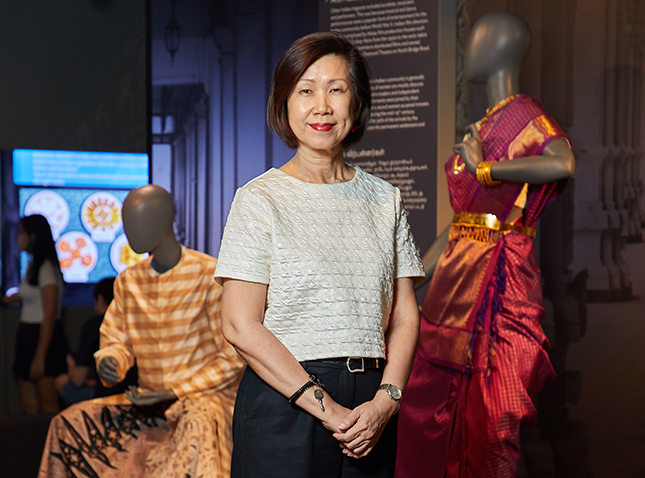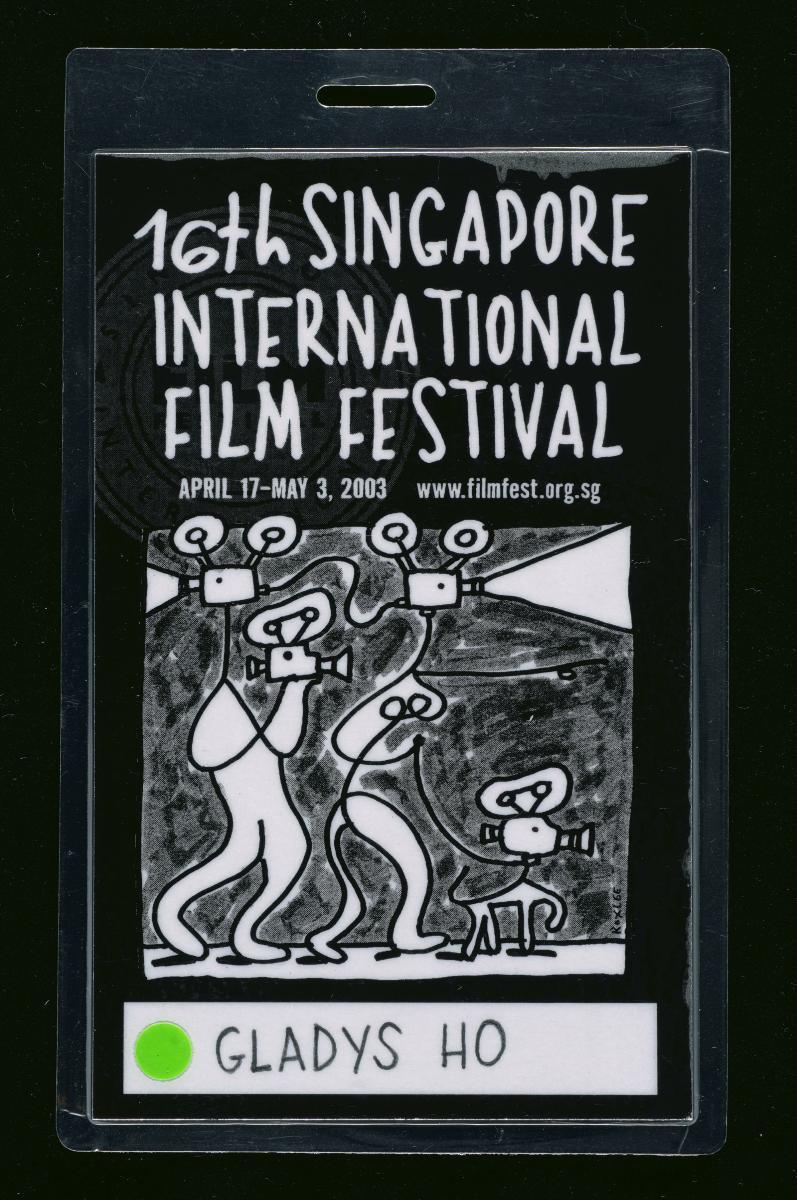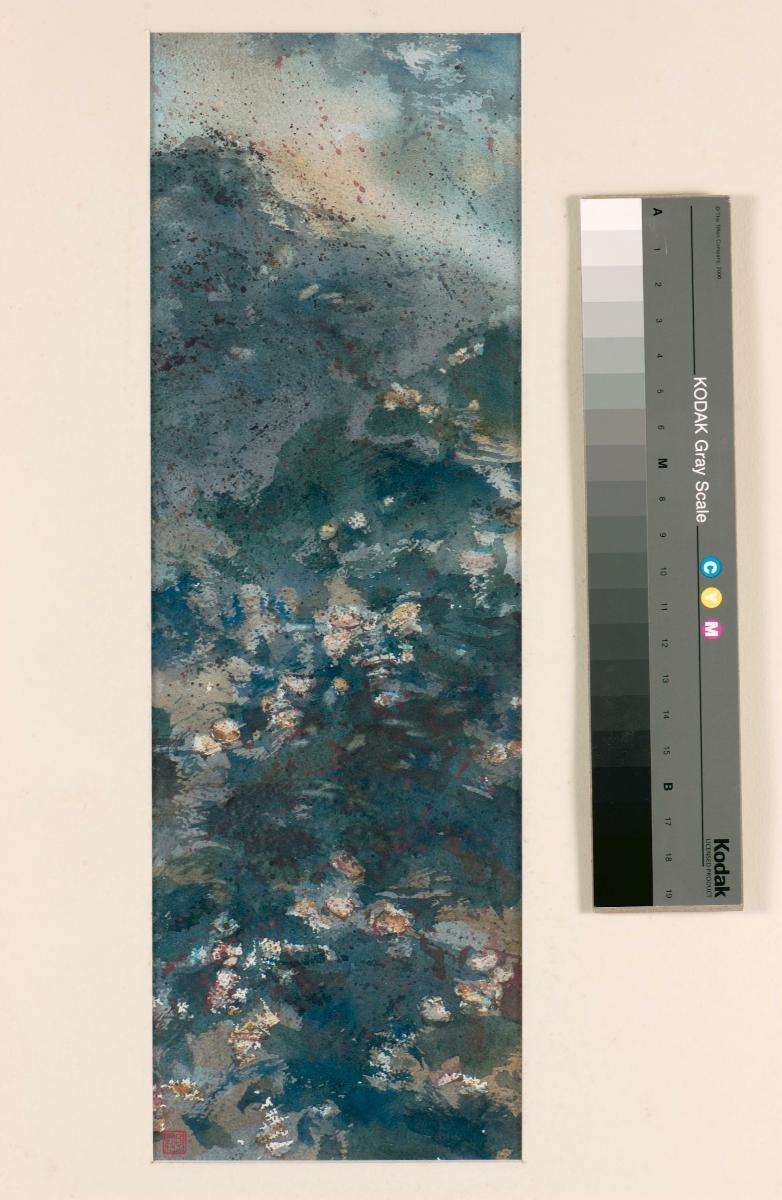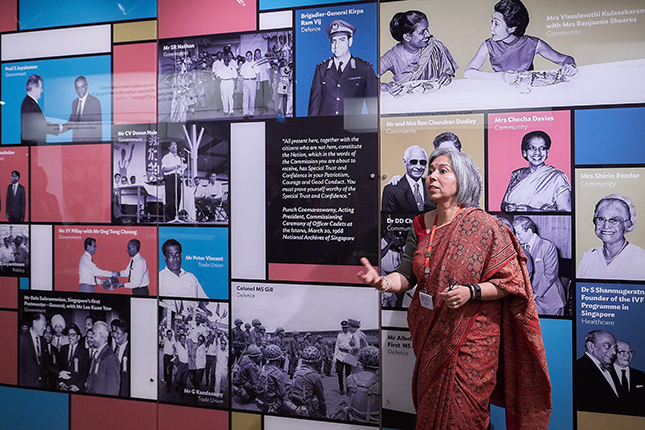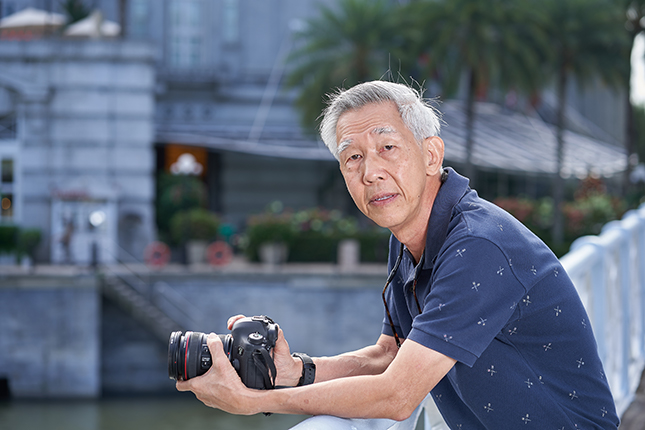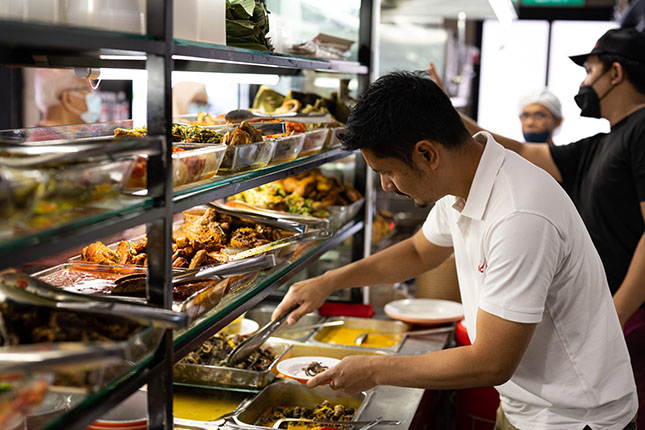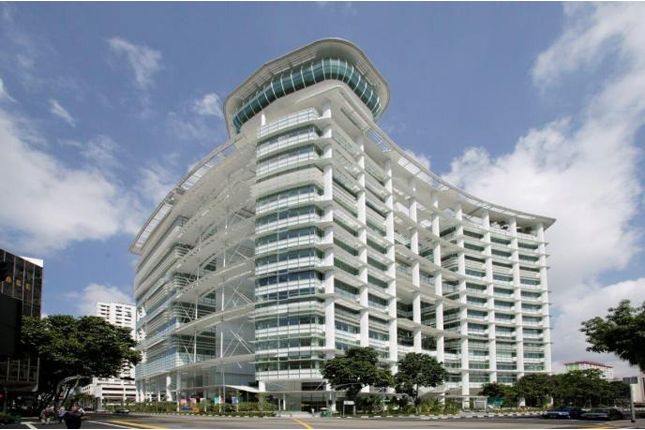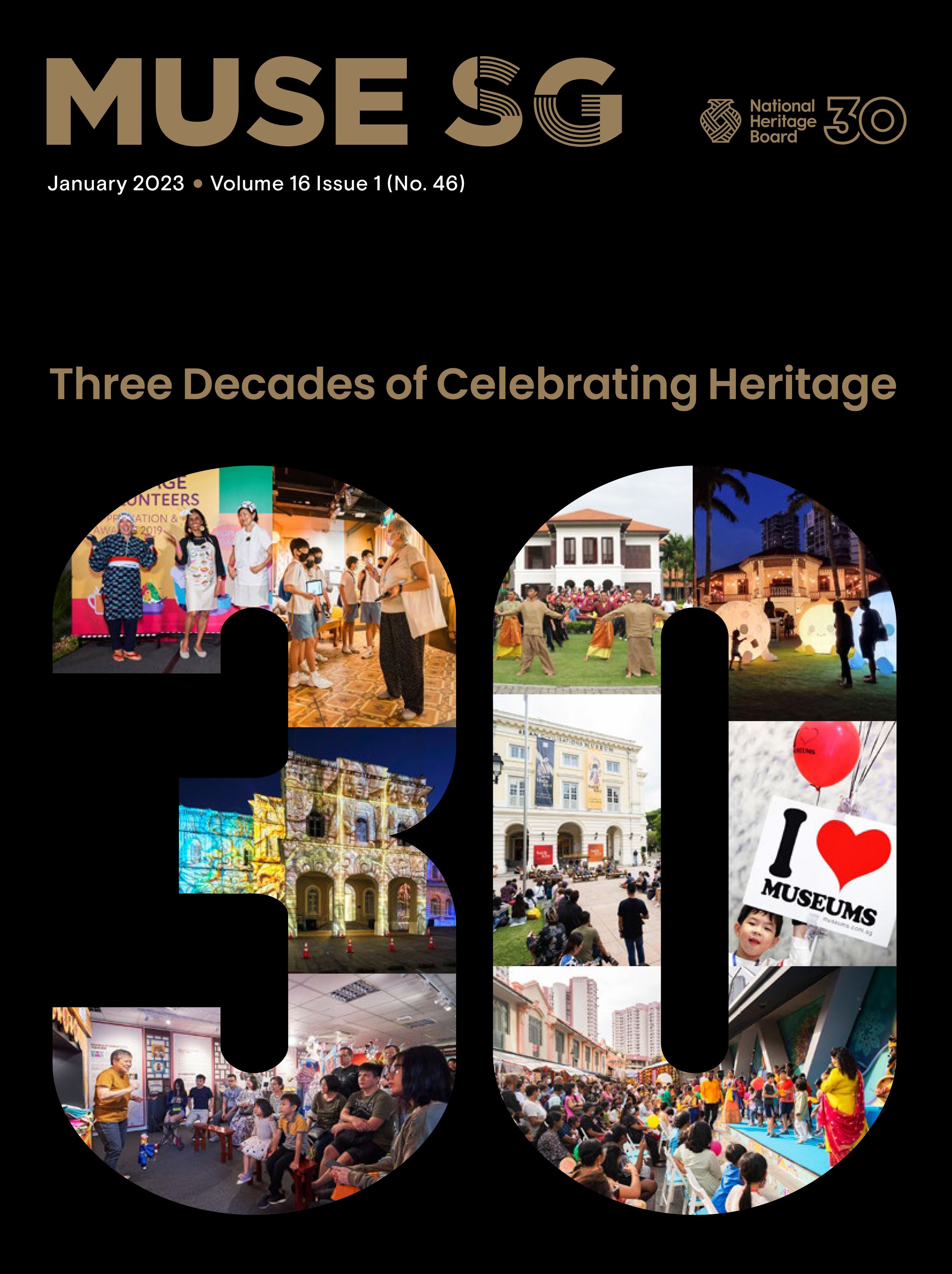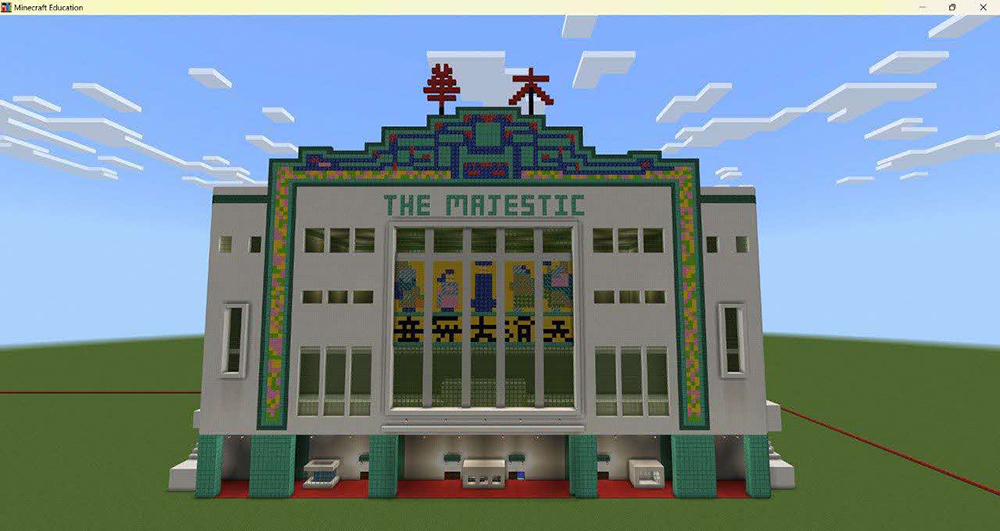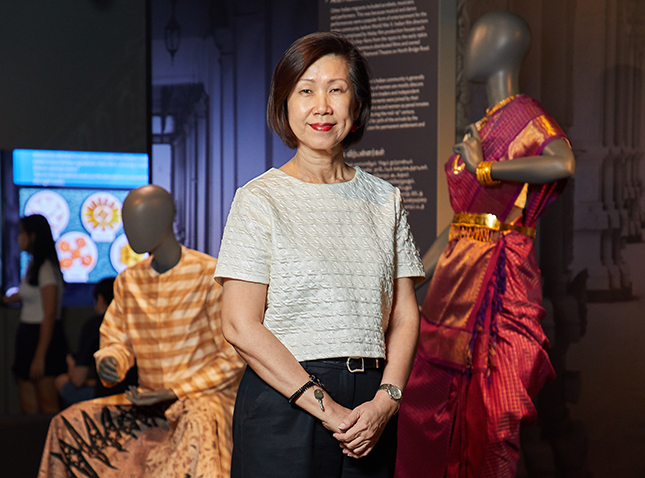
Becoming a docent
Swan Hoo’s decision to become a docent stemmed from a love for history. “I married a man who was very much interested in history and whenever we travelled, we would spend a lot of time visiting museums,” recalled Swan Hoo. These museum visits with her husband, Dr Balaji Sadasivan, helped her to appreciate the role played by good docents.
“Reading the captions and panel texts alone can be very tedious and one might be exhausted before getting a good grasp of the exhibition. A guided tour helps one focus on what is interesting, and what the narrative of the exhibition is,” observed Swan Hoo.
Thus, in 2001, she completed docent training at the Singapore History Museum (now called the National Museum of Singapore). Since then, she has guided visitors at The Peranakan Museum, Asian Civilisations Museum, National Museum of Singapore, Indian Heritage Centre, Sun Yat Sen Nanyang Memorial Hall, Singapore Art Museum, and the National Gallery Singapore. She keeps herself up to speed by attending the latest training sessions at these institutions.
Shaping societal values
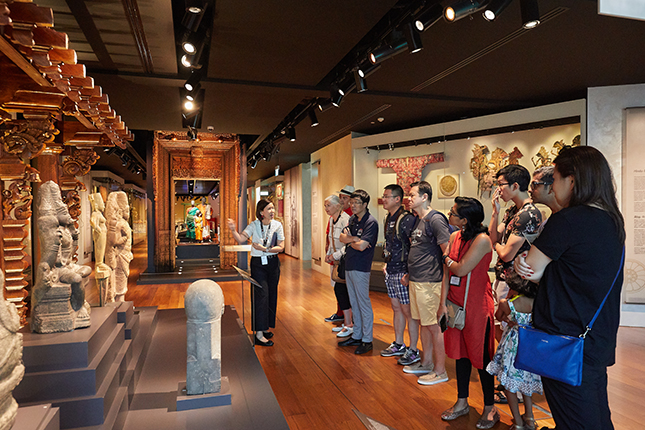
“Although we’ve had a relatively short history, we did face a lot of challenges, and, fortunately, we had very capable leaders who were able to bring us out of these difficult times to where we are today,” says Swan Hoo. “It is important that we continue to progress and achieve the sort of society we are in now. I really feel we shouldn’t take things for granted.”
Swan Hoo’s compassion for people has led to deeds that go beyond typical museum volunteerism. For instance, she has bought the artworks of prison inmates and donated them back to their families. She has travelled with the Singapore International Foundation to Ho Chi Minh City in Vietnam, to teach English at eight secondary schools there.
Leading museum volunteers
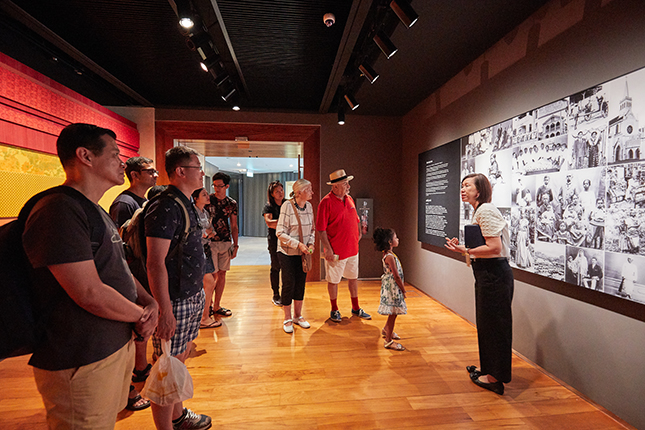
During this period, she worked closely with the volunteers to achieve the nearly impossible task of keeping the no-show of docents close to zero. What helped? Swan Hoo introduced an electronic scheduling system which let docents select their guiding slots and be responsible for finding their own replacement if they were unable to turn up. Having set up the system, she and her committee went a step further to mobilise, persuade and teach fellow docents to use the system.
“We don’t want our reputation as a museum or as a country to be tarnished just because the docent didn’t show up,” says Swan Hoo. “As far as visitors are concerned, they would not know that there is a last-minute cancellation of the tour, and they may have planned their day’s programmes around attending the tour. Imagine how the front-desk will be in a fix having to handle angry visitors. So, we must turn up.”
Sharing her vision
Swan Hoo has many ideas that would make museums a bigger part of people’s lives. For instance, she would love to involve more senior citizens in guiding museum tours for community groups. Singapore’s aging population lends itself nicely to this. “Senior citizens,” she says, “might be able to relate to a lot of the events that happened in the past which younger guides might not be familiar with.”
She envisions them doing soapbox tours. “We can keep our senior citizens actively engaged. They will feel that they are contributing to Singapore, and it also gives them a good reason to get out of the house, travel to the museum, get to know people, and get to learn about history or art or artefacts,” Swan Hoo says.
Another dream of hers is that all schools have professionally-trained museum educators. She would also love to see museums become alternative classrooms. “I feel that our museums should be places where our students can learn; not just go once, but make repeat visits. There are so many things they can learn at the museums,” concludes Swan Hoo.
When opportunities arise, Swan Hoo willingly shares such ideas. The Indian Heritage Centre benefits immensely from Swan Hoo’s visionary outlook – she serves on its advisory board. She also regularly participates in dialogue sessions aimed at nation building, such as the Our Singapore Conversation and NHB’s Heritage Plan dialogues. She hopes her ideas for museums will come to fruition soon so that history will indeed be a beacon for our nation’s future.
By Richard Philip




